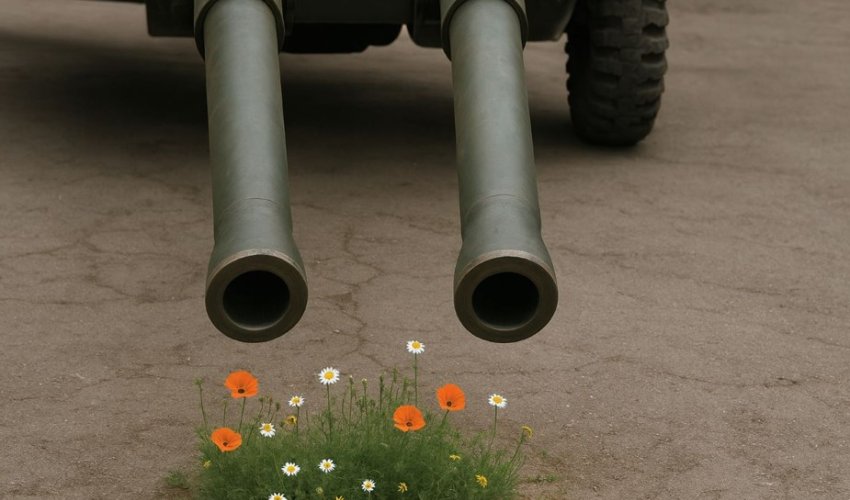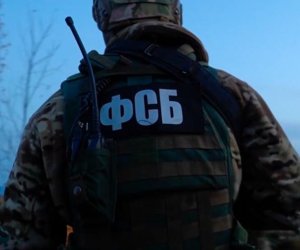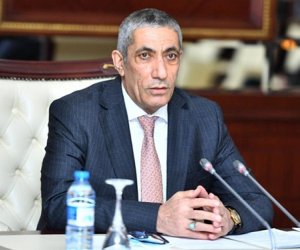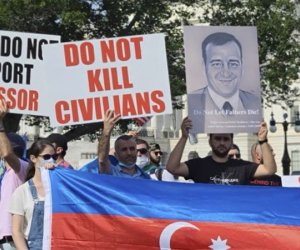The Bishkek Protocol for Ukraine

When the gunfire finally fell silent in May 1994, the ceasefire between Armenia and Azerbaijan seemed more like a desperate pause in a war that had destroyed lives, displaced more than a million people, and reshaped the map of the South Caucasus.
Few expected that a fragile truce, concluded at the dusk of the post-Soviet collapse, would last for decades or lay the groundwork for one country to become a regional energy power.
And yet that is exactly what happened.
The story of how the ceasefire was reached—and how it changed the destinies of two newly independent states—serves as a reminder of how fragile political arrangements can alter the trajectory of nations.
A Ceasefire Born of Exhaustion and Uncertainty
By early 1994, the war had reached a stalemate. Armenia, whose forces controlled large swaths of Azerbaijani territory, faced economic isolation and mounting strain. Azerbaijan, shaken by political turmoil and territorial losses, was nearing collapse.
President Heydar Aliyev, who had returned to power in Baku a year earlier, inherited a nation in chaos. The army was fragmented, the economy was deteriorating, and the government itself was threatened by internal rebellions. Aliyev’s priority was survival—and ending the war was essential to that goal.
Russia stepped in. Seeking to restore its influence in the unstable South Caucasus, Moscow sent its seasoned envoy Vladimir Kazimirov, whose tireless shuttle diplomacy led to the signing of the Bishkek Protocol in May 1994. It was not a peace agreement; it was a ceasefire reached quietly, almost reluctantly, because the alternatives looked worse.
On May 12, the fighting stopped. There were no celebrations. People were too exhausted and too unsure of what would come next.
In his speech on May 21, 1994, Heydar Aliyev said: “We understand very well that if the war continues, it will lead to new great tragedies. That is why we want to put an end to it; we strive to resolve the problem by peaceful means… By signing the Bishkek Protocol, Azerbaijan pursued a single goal — to stop the gunfire, and we achieved this, which is a positive fact for us.”
A Peace Process Without Peace
The following years brought diplomatic activity but few results. The OSCE Minsk Group, led by Russia, France, and the United States, became the official forum for negotiations. Endless proposals followed: the “package,” “phased,” “common state,” the “Madrid Principles.” None p
For Armenia, the priority was consolidating gains achieved on the battlefield. For Azerbaijan, it was the return of lost territories and assurances that the conflict would not become permanent.
The result was a diplomatic paradox: a frozen conflict that was anything but frozen. Soldiers continued to die in sporadic clashes, sometimes by the dozens. Political rhetoric hardened even as negotiators posed for group photos in European capitals.
And yet the ceasefire endured—partly because both societies needed a respite to build states that had barely existed a few years earlier.
Azerbaijan: Stability Becomes Strategy
No country changed more radically after the 1994 ceasefire than Azerbaijan.
Aliyev, a former Politburo member skilled in political consolidation, used the breathing space to rebuild institutions, rein in warlords, and restore order to a fragmented state. Unlike the chaos of the early 1990s, the new leadership displayed discipline and ambition.
Foreign executives began arriving in Baku, attracted by the prospects of vast offshore oil reserves that had remained undeveloped for decades. But they needed guarantees—above all, that the ceasefire would last.
In September 1994, just four months after the guns fell silent, Aliyev gathered a consortium of Western oil companies in Baku. The result was the landmark “Contract of the Century”—a production-sharing agreement that would channel billions of dollars into the country’s energy sector.
The deal was unprecedented in the post-Soviet world. It brought together BP, Amoco, Statoil, Total, Unocal, Itochu and others into a consortium that would ultimately turn the Azeri–Chirag–Guneshli fields into one of the world’s largest oil deposits outside the Middle East.
The ceasefire made it possible; the contract made it transformative.
Energy revenues became the foundation of Azerbaijan’s modern economy. They funded new highways, airports, cultural institutions, schools, and social programs, and helped establish a sovereign wealth fund intended to stabilize future generations. They also financed large-scale military modernization, which decades later reshaped the balance of power once again.
Armenia: Stability With the Costs of Isolation
For Armenia, the end of hostilities brought a different kind of stability. Politically, the country consolidated around the idea of victory and security. Economically, however, the post-war years were difficult.
With its borders closed by Turkey and Azerbaijan, Armenia relied heavily on the diaspora for investment and on Russia for security and energy. The ceasefire gave Yerevan time to develop its institutions and eventually integrate into the global economy, but structural constraints linked to geography and blockade persisted.
While Azerbaijan attracted billions in foreign capital, Armenia’s growth was steadier but more limited. This divergence shaped the countries’ trajectories for decades.
A Long Peace That Was Never Real Peace
The 1994 ceasefire did not reconcile Armenians and Azerbaijanis. It froze the conflict rather than resolved it, leaving both sides convinced that history had been paused rather than rewritten.
But it achieved something arguably more significant: it allowed two states born from the ruins of the Soviet Union to consolidate their identities and political systems.
It enabled Azerbaijan to transform from a fragile post-Soviet republic into a strategic energy supplier whose pipelines reached the Mediterranean and supplied Europe. It allowed Armenia to stabilize and maintain its security doctrine even as economic pressures rose. And it created an imperfect diplomatic framework that prevented a full-scale war for an entire generation.
The truce lasted more than 25 years and offered real opportunities for a compromise-based peace treaty. Unfortunately, these opportunities were missed, and in 2020 the ceasefire was finally shattered—once again reshaping the region.
But the legacy of the 1994 ceasefire remains: it is a reminder that even imperfect agreements can create room for states to define themselves.
In the South Caucasus, that room proved enough to change the map, the economy, and the future.
Applying These Lessons to Ukraine: A Ceasefire as a Beginning, Not an End
When Armenian and Azerbaijani commanders agreed to stop firing in May 1994, few believed the truce would last. It was drafted in haste under Moscow’s mediation and signed by exhausted leaders who distrusted each other as deeply as Russia and Ukraine distrust each other today.
Three decades later, as Ukraine and Russia face the possibility of a negotiated ceasefire that could halt the fighting without resolving the conflict, the South Caucasus offers a stark and complicated precedent.
It is not a blueprint. But it is a warning—and perhaps a quiet source of hope.
For Ukraine and Russia, a similar transition—from military confrontation to political bargaining—could be the difference between destructive uncertainty and the first steps toward eventual reconciliation, however distant.
A ceasefire does not require trust. It requires exhaustion, pressure, and time.
Today, Ukraine is larger, more integrated with the West, and more politically cohesive than either Azerbaijan or Armenia in 1994. Russia, meanwhile, is more authoritarian, isolated, and militarized than it was in the 1990s. The conflicts are not identical.
But the logic of the 1994 ceasefire remains relevant:
1. A Ceasefire Can Create Political Space for Transformation
Just as Azerbaijan emerged from the ceasefire with a modernizing army and a globalizing economy, Ukraine could use a negotiated truce to:
• deepen integration with Europe,
• rebuild war-damaged infrastructure,
• strengthen state institutions,
• consolidate NATO-level military standards.
An incomplete ceasefire is not a defeat. It is an opportunity for strategic restoration.
2. Russia Cannot Remain Frozen Forever
In the South Caucasus, the long road to an eventual settlement passed not only through Baku and Yerevan but also through Moscow—a Russia undergoing internal change after the Soviet collapse.
Today, a peace agreement acceptable to both sides is unlikely while Russia remains locked in its current political model. But as the 1994 precedent shows, the political landscape of a region can change dramatically over time.
A Russia seeking to exit isolation, under internal pressure, and facing the limits of a militarized economy may eventually become more open to compromise. The prospect of a more democratic Russia is not fantasy; it is something the region has seen before.
A decade from now, both countries may be political actors sharing similar civilizational values—conditions for real peace that are impossible today.
Yes, the 1994 ceasefire did not bring peace. But it created the political, economic, and psychological conditions that made peace—even the one achieved decades later through force—possible.
For Ukraine and Russia, a ceasefire could be the beginning of the story, not the final line.
And in a war that has already upended Europe’s security architecture, a beginning may prove to be the most important step.
Mehman Aliyev




































 Photo
Photo 



 Video
Video 

